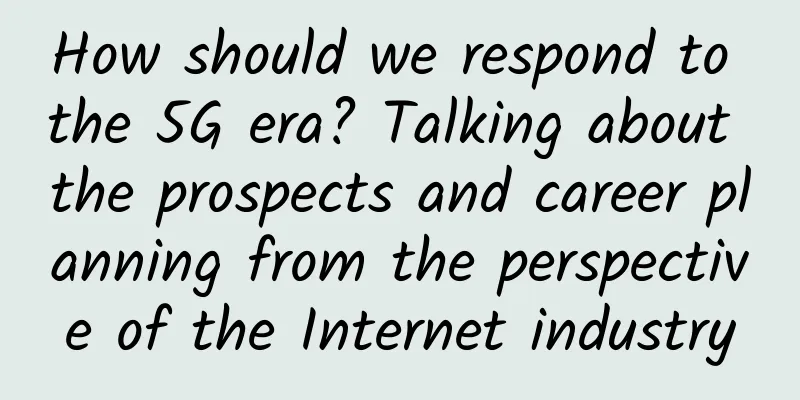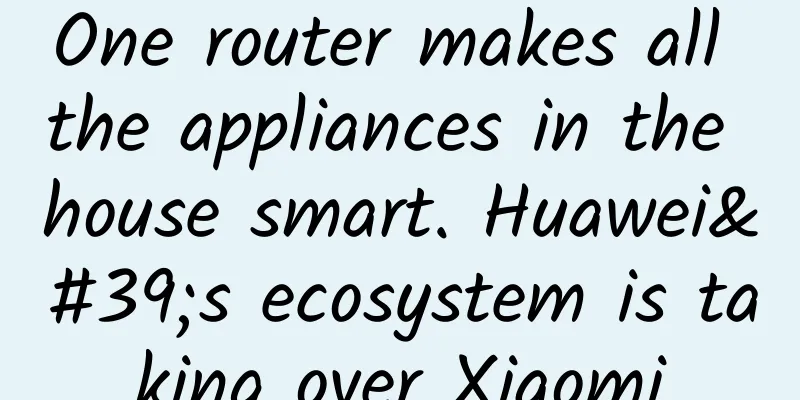How should we respond to the 5G era? Talking about the prospects and career planning from the perspective of the Internet industry

|
The 5G war is in full swing, so what are the countries fighting for? Why do we say that this is a major change that has not happened in the world for a century? And why do we call it "a new round of scientific and technological revolution and industrial revolution to accelerate the reshaping of the world"? So, how should we respond when we are in it?
This question was raised by a college student, and I am first answering this question for college students. In fact, it is also a question that each of us is concerned about. After reading this article, you will know what computer language you need to learn and what preparations to make now. Today, we will start from two industries to answer these questions. This article will focus on the two major industries of manufacturing and service industry and explain from three perspectives: 1. Why do we talk about manufacturing and service industries? Yes, why manufacturing and service industries? Isn’t 5G affecting the software and Internet industries? You can say yes, and you can say no. Let's look at Huawei, a representative of the manufacturing industry. Is Huawei a manufacturing industry? Yes, it manufactures products, such as mobile phones, base stations, servers, and other products. Then, each product is combined with software and chips, so where is the software industry? Let's take a look at Haidilao. This is a restaurant, which belongs to the service industry. But is Haidilao just a service industry? The entire process behind it, the ingredients, including various production automation, service software, self-media promotion and operation, how many characteristics of manufacturing industry do these have? Therefore, in today's world, manufacturing and service industries have been integrated because of software and chips. Manufacturing is doing service business, and service industry is also doing manufacturing business. The connection point is software. It should be noted that chips and software are essentially the same thing. In fact, the software industry also has the characteristics of the manufacturing industry to a certain extent. 2. What does the 5G era bring to the manufacturing and service industries? 3 terms: decentralization, personalization, and high-speed iteration Behind these three words, there are three technology groups and one demand.
3. Development of the Internet Industry and Career Planning At the beginning of the Internet, it seemed to be a personal toy. As the Internet develops, it has covered almost all industries. So I will classify the Internet industry into the service industry and the manufacturing industry. Because it is everywhere. In the following, I will equate the three words "Internet", "chips" and "software" and refer to them all as "software". The future of the software industry is moving towards flattening. What is flattening? There are only two poles: one is the application pole and the other is the basic pole.
So where do we stand as individuals? This requires you to measure and evaluate yourself, whether you have great potential at the basic level or have great ideas at the product level. There are two languages we need to mention here. Go and python.
So, if you ask, what language is good to learn? Then perhaps these characteristics are what we need to ask ourselves. It should be noted that language is just language, and behind it is the relevant professional knowledge background. |
>>: Who will save the grassroots employees of operators who are almost unable to bear it?
Recommend
BuyVM: 1Gbps unlimited traffic KVM starts at as low as $2/month, 256GB disk starts at only $1.25/month
BuyVM is a foreign hosting company founded in 201...
Sharktech 20th Anniversary Cloud Server 20% off, Netherlands/Denver/Los Angeles High Defense Private Cloud/Public Cloud Server
Sharktech is currently carrying out a 20th annive...
Qualcomm, Ericsson and OPPO achieve Europe's first commercial 5G SA network
According to foreign media reports, OPPO, Ericsso...
AT&T 5G is powering 'massive' enterprise IoT
US-based telecom operators have been working on h...
Two questions to easily understand Riverbed's 2018 and 2019
[51CTO.com original article] Recently, Riverbed h...
4G investment has been frozen. China Telecom: It will take 3-4 years before you can use 4G and 5G with confidence
5G exploded in China in 2020. Have you changed yo...
5G core network architecture and some basic concepts
The 5G wireless access network architecture mainl...
How to protect data in an increasingly insecure environment?
Protecting data is becoming increasingly difficul...
Report: Global Satellite IoT Market Users to Reach 26.7 Million in 2028
According to a recent research report released by...
5G messaging has started commercial trials. Can it change the current instant messaging landscape? Will it replace WeChat?
Since the release of the "5G Message White P...
Array explains the way of "power and change" and how the NFP platform allows enterprises to be flexible and not constrained by IT
[51CTO.com original article] The interview with Z...
Chinese companies account for more than 30% of global 5G standard patent declarations
CCTV News: The reporter learned from the Ministry...
Introduction to MQTT protocol, MQTT is the standard messaging protocol for IoT (everyone in IoT must know)
MQTT (Message Queuing Telemetry Transport) is a &...
Gossip about the upcoming 5G era: the three-player pattern
5G is coming soon, and now is the eve of it. Let&...
What is AirGig?
At the MWC 2017 conference, which has ended, peop...




![[6.18] iOVZ VPS 20% off monthly payment and 30% off annual payment, Hong Kong VPS gets double memory](/upload/images/67cabe6619e38.webp)




